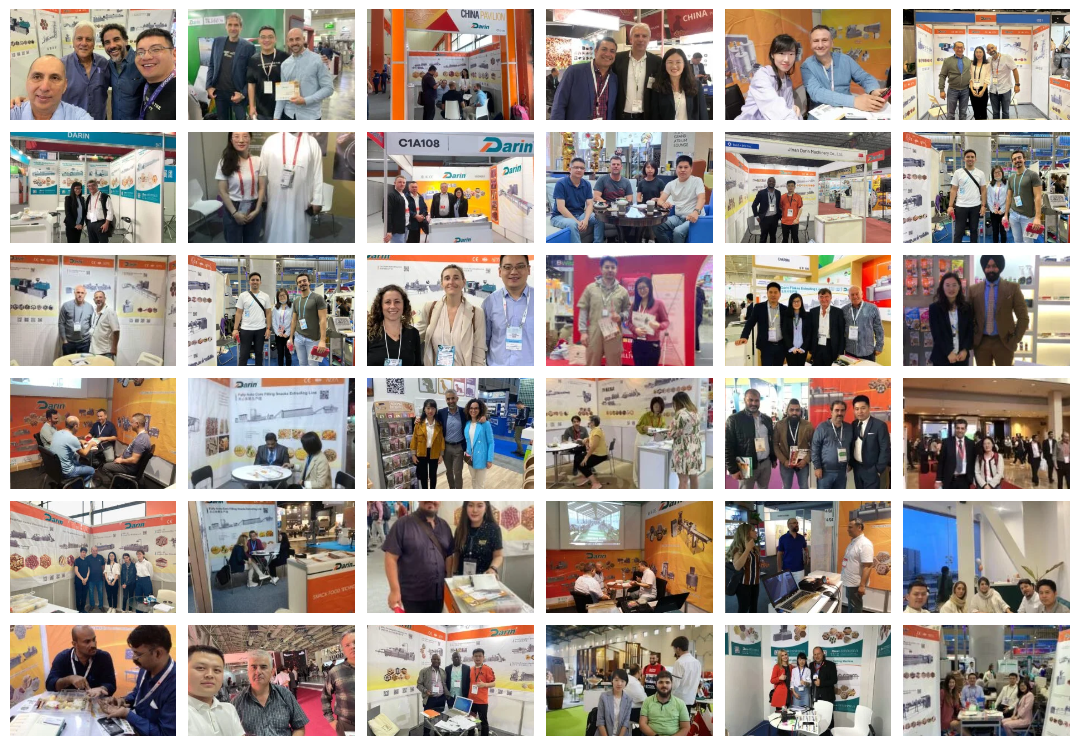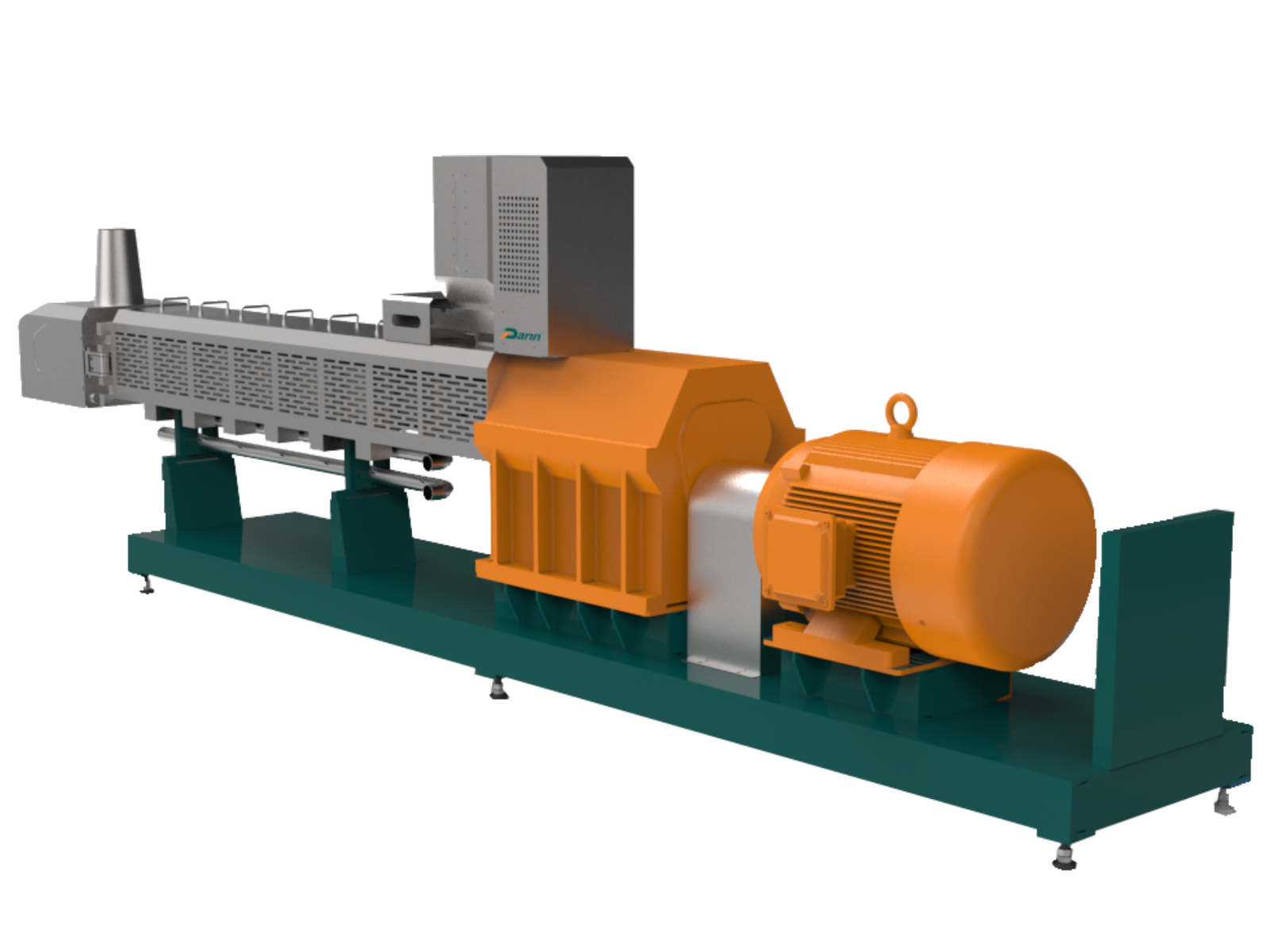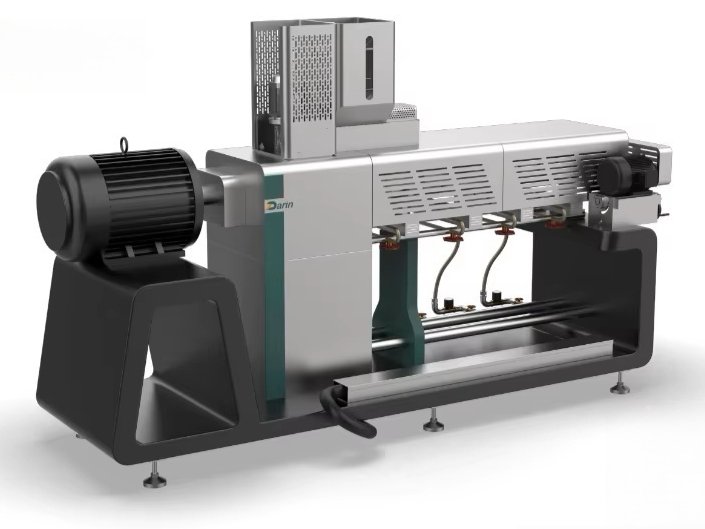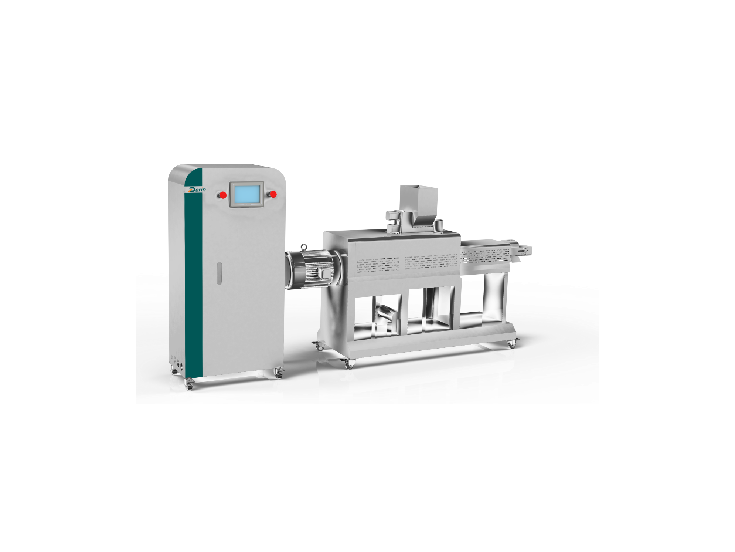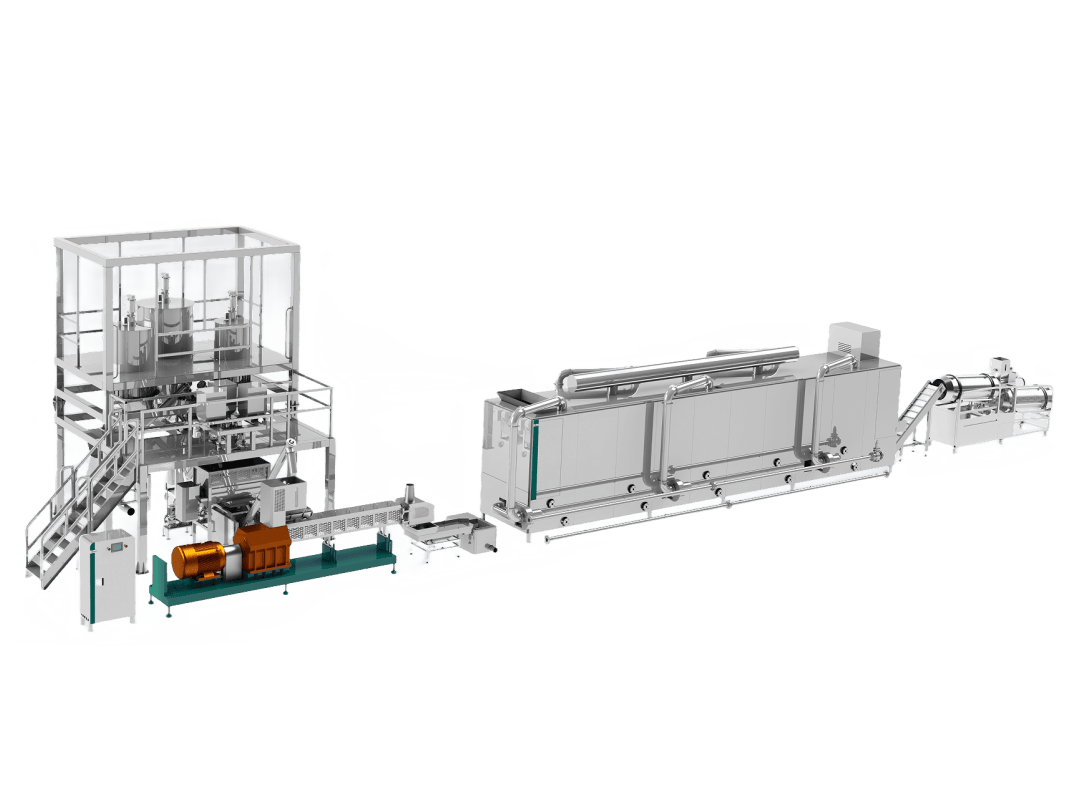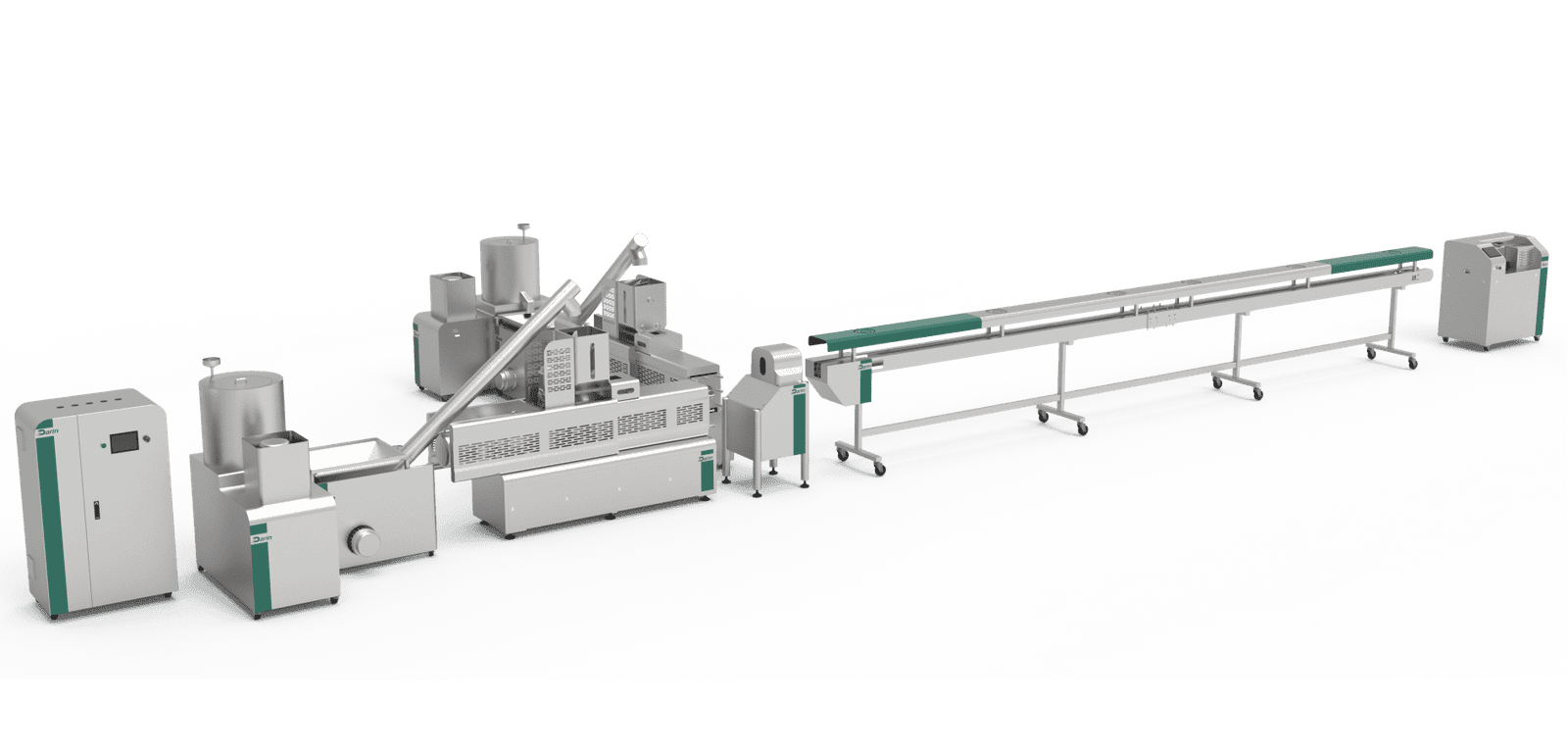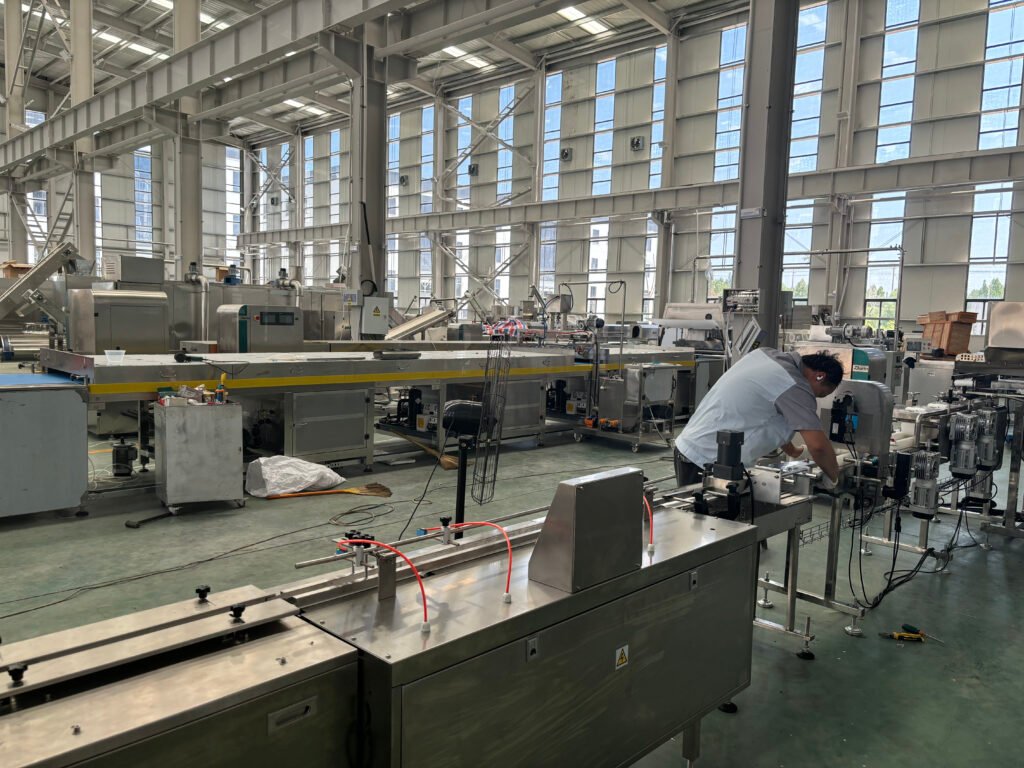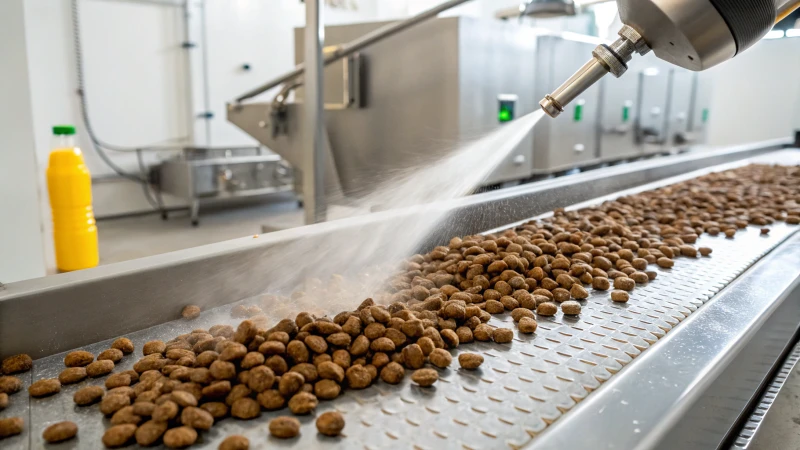
When purchasing or designing a pet food extruder, one of the most important technical aspects to evaluate is the construction material of the machine. This choice directly impacts the hygiene, durability, corrosion resistance, and long-term performance of the extruder—especially since the equipment operates under high pressure, temperature, and exposure to aggressive ingredients. Choosing the wrong material can lead to contamination risks, frequent maintenance, or early breakdowns. The right construction materials ensure compliance with food safety standards (like FDA, CE, or HACCP), withstand mechanical and chemical wear, and provide excellent return on investment. In this article, we dive deep into the various materials used in pet food extruder construction and explain how to select the most suitable ones for your production needs.
The primary materials used in pet food extruder construction are high-grade stainless steels such as SS304 and SS316 for food contact surfaces due to their corrosion resistance and hygienic properties, while hardened alloy steels and nitrided steels are used in wear parts like screws and barrels for strength and abrasion resistance. Non-contact frames may be made of carbon steel with anti-rust coating.
This isn’t just a detail for engineers—it’s a key decision point for plant managers, buyers, and quality control teams. Keep reading to learn how each material functions in different parts of the extruder and what regulations and conditions they are designed to meet.
All parts of a pet food extruder must be made from stainless steel.False
While food-contact components must use stainless steel, non-contact parts like support frames and housings may use coated carbon steel to reduce costs without compromising hygiene.
Materials Used in Pet Food Extruder Construction
1. Overview of Main Material Types and Functions
| Extruder Part | Common Material Used | Purpose/Reason |
|---|---|---|
| Contact surfaces (hopper, barrel inner wall, die) | Stainless Steel 304/316 | Corrosion resistance, food-grade hygiene |
| Screws and shafts | Hardened tool steel, nitrided steel, or stainless steel | Wear resistance, high strength |
| Barrel outer housing | Carbon steel or stainless steel | Structural support, corrosion resistance |
| Support frame and chassis | Carbon steel with epoxy coating | Cost-effective structural integrity |
| Seals and gaskets | Food-grade rubber or Teflon | Prevent leakage, compliant with food safety |
| Control panels | Stainless steel or powder-coated steel | Protection, ease of cleaning |
Different sections of the extruder face varying mechanical and chemical stresses, so material selection is optimized accordingly.
2. Stainless Steel Grades: SS304 vs. SS316
SS304 Stainless Steel
- Most commonly used in food equipment.
- Excellent corrosion resistance.
- Cost-effective and easy to fabricate.
SS316 Stainless Steel
- Enhanced corrosion resistance due to molybdenum content.
- Better for marine or high-chloride environments.
- Preferred for premium or export-grade equipment.
| Property | SS304 | SS316 |
|---|---|---|
| Composition | 18% Cr, 8% Ni | 16% Cr, 10% Ni, 2% Mo |
| Corrosion Resistance | Very good | Superior (especially against salts/acids) |
| Cost | Lower | Higher |
| Use Cases | Hoppers, frames, barrels | Contact dies, pipes in harsh conditions |
For international food safety compliance (FDA/CE), both SS304 and SS316 meet food-grade standards.
3. Screws, Barrels, and Wear-Resistant Materials
The screw and barrel are the high-wear components of a pet food extruder. They must withstand:
- High pressure (up to 40 bar)
- Temperatures (120–180°C)
- Abrasive ingredients (meat meals, bone dust, grains)
Common Materials:
- Nitrided steel (e.g., 38CrMoAlA): Treated with nitrogen to harden surface (~900–1000 HV).
- Tool steels (e.g., D2, SKD11): Heat-treated for toughness and wear resistance.
- Bimetallic barrels: Have a wear-resistant liner inside a structural outer steel housing.
- Carbide coatings (e.g., tungsten carbide): Applied to screws to enhance abrasion resistance.
| Component | Material | Hardness (HV) | Lifespan Estimate |
|---|---|---|---|
| Nitrided Screw | 38CrMoAlA (nitrided) | 900–1000 | 5,000–8,000 hrs |
| Tool Steel Barrel | SKD11/D2 | 1000–1200 | 6,000–10,000 hrs |
| Bimetallic Barrel | Lined + mild steel | Up to 1500 | 8,000–12,000 hrs |
Advanced extruders offer modular screw segments to allow part-by-part replacement, extending machine life and reducing costs.
4. Non-Food Contact Structures and Cost Optimization
While food-contact areas must comply with hygienic standards, manufacturers often use more cost-efficient materials in non-critical areas:
- Frames and platforms: Made of mild steel (Q235B or A36) with anti-corrosion coating.
- Piping and conveying ducts: May use aluminum or powder-coated steel if not in direct food contact.
- Panels and enclosures: Often SS304 or powder-coated metal for aesthetics and durability.
This hybrid construction ensures durability and regulatory compliance without overengineering.
5. Regulatory Compliance and Material Certifications
Extruder materials must comply with food safety standards such as:
- FDA (U.S.): Materials must be non-toxic and resistant to corrosion/abrasion.
- CE (EU): Includes mechanical safety and hygiene compliance.
- HACCP/GMP: Requires sanitary design and cleanability.
Certified manufacturers will offer documentation like:
- Material traceability certificates
- NDT reports (non-destructive testing for structural parts)
- Surface roughness inspection for hygiene
| Standard | Requirement | Material Implication |
|---|---|---|
| FDA 21 CFR 177 | Non-toxic food contact surfaces | SS304/316 required |
| CE EN 1672-2 | Hygienic design for food machines | Rounded edges, clean welds |
| ISO 9001/14001 | Quality and environment compliance | Traceable and recyclable materials |
6. Chart: Comparison of Key Materials by Functionality
| Property | SS304 | SS316 | Nitrided Steel | Tool Steel (D2/SKD11) |
|---|---|---|---|---|
| Corrosion Resistance | High | Very High | Medium | Medium |
| Abrasion Resistance | Moderate | Moderate | High | Very High |
| Heat Resistance | High | High | Very High | Very High |
| Cost | Moderate | High | Moderate | High |
| Food Contact Suitability | Yes | Yes | No (coating needed) | No (unless coated) |
7. Common Mistakes to Avoid When Selecting Materials
- Using SS201 or substandard steel: It may look similar to SS304 but corrodes faster and lacks food certification.
- Ignoring coating wear: Painted or coated carbon steel may degrade over time, exposing rust risks.
- Not inspecting weld seams: Poor welds can trap food and become bacterial breeding grounds.
- Assuming all screws are the same: Low-cost screws may use inferior alloy steel with poor wear resistance.
Always request detailed material specifications and certificates of compliance before purchasing or installing equipment.
8. Technological Innovations in Extruder Materials
Recent advancements include:
- Plasma nitriding and vacuum hardening for deeper case hardening.
- Bimetallic extruder barrels with integrated ceramic or carbide liners.
- 3D-printed wear liners and screw segments customized for specific formulations.
- Self-cleaning materials or coatings that reduce residue accumulation.
These innovations not only improve extrusion performance but extend maintenance intervals significantly.
Conclusion
The material used in the construction of a pet food extruder directly affects food safety, operational reliability, and the lifecycle cost of the machine. Stainless steel (particularly SS304 and SS316) is essential for hygienic contact surfaces, while hardened steels and advanced coatings ensure wear-resistance in mechanical parts like screws and barrels. Non-contact structural parts can use cost-effective coated carbon steel, provided they are well-designed and maintained. Whether you're investing in a pilot machine or a multi-ton-per-hour production line, understanding the role of each material helps you make informed, long-lasting decisions that ensure compliance and maximize ROI.
Get Expert Help in Choosing the Right Extruder Materials
Looking to build or upgrade a pet food production line? Contact our engineering team for expert advice on material selection, custom extruder design, and food safety compliance. We’ll help you get the best performance and durability tailored to your specific ingredients and operational demands.
Let’s build a machine that works for your future—reach out today!
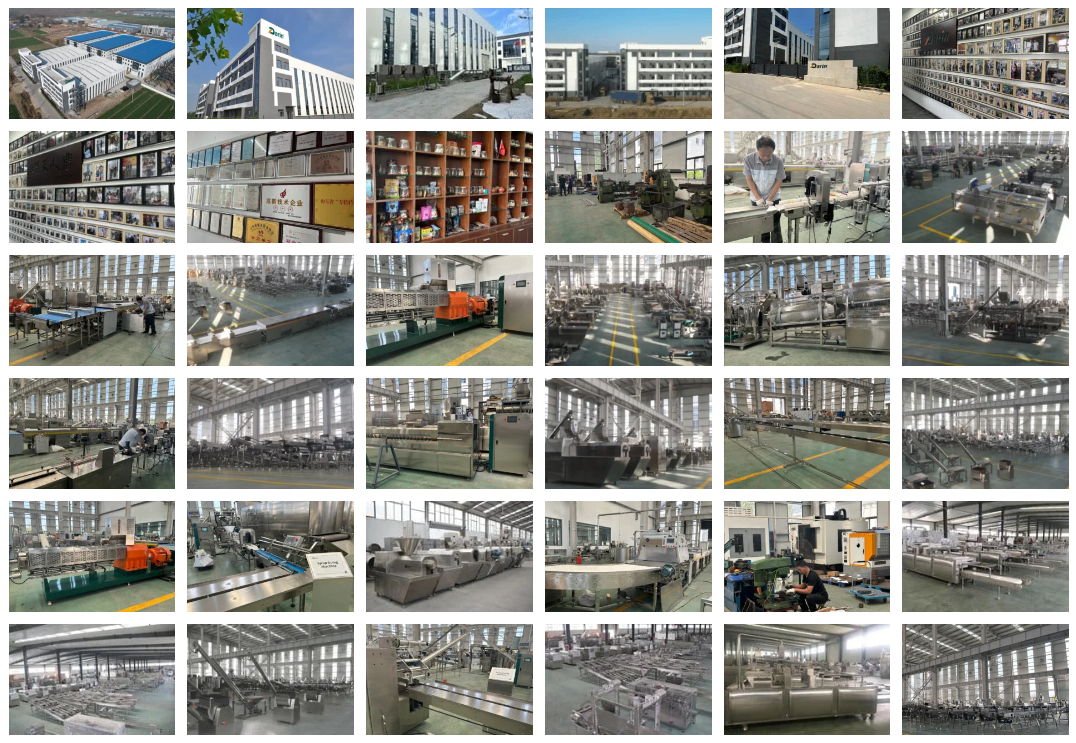
FAQ
Q1: What material is commonly used to construct pet food extruders?
A1: Most pet food extruders are constructed using food-grade stainless steel, typically 304 or 316 grade. These materials offer excellent resistance to corrosion, high temperatures, and aggressive cleaning agents, which are essential in maintaining hygienic standards and ensuring equipment longevity in food production environments.
Q2: Why is stainless steel preferred for pet food extruder construction?
A2: Stainless steel is favored due to its non-reactive surface, corrosion resistance, and ease of cleaning. These properties are crucial in preventing contamination, ensuring product safety, and complying with food processing regulations such as FDA or EU standards.
Q3: Are there any parts of the extruder made from other materials?
A3: Yes, while the primary structure is stainless steel, certain internal components like screw elements, bushings, and liners may use hardened alloy steels or wear-resistant coatings such as tungsten carbide. These materials enhance performance, resist abrasion, and reduce maintenance downtime.
Q4: How does the material impact the durability of the extruder?
A4: The choice of construction materials directly affects durability. Stainless steel structures resist corrosion and physical damage, while high-strength alloys in wear zones extend equipment life and reduce replacement frequency. This leads to lower total cost of ownership over time.
Q5: Does the material of construction affect food safety?
A5: Absolutely. Materials must be non-toxic, non-reactive, and easy to sanitize. Food-grade stainless steel ensures no harmful chemicals leach into the product and facilitates rigorous cleaning procedures to prevent microbial growth and cross-contamination.
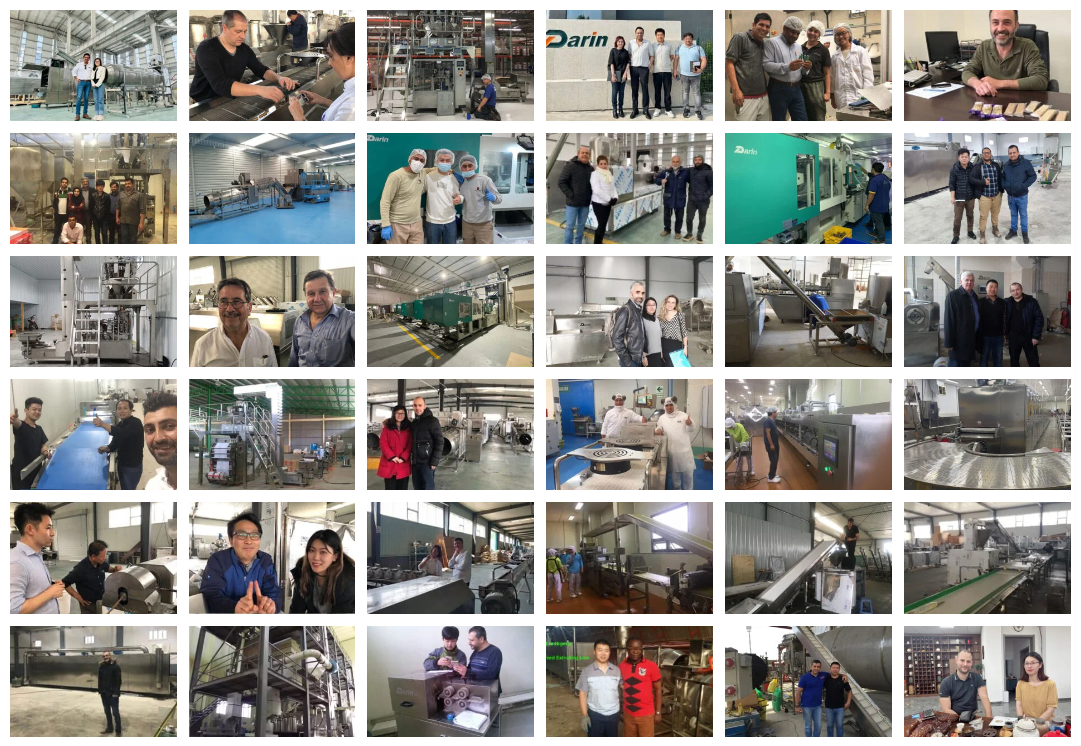
References
- Stainless Steel Grades Explained - https://www.ryerson.com/resource/the-gauge/stainless-steel-grades - Ryerson
- Food-Grade Stainless Steel Standards - https://www.marlinwire.com/blog/what-is-food-grade-stainless-steel - Marlin Steel
- Pet Food Extruder Design Materials - https://www.extru-techinc.com/pet-food-extrusion - Extru-Tech Inc.
- Extruder Wear Parts Material - https://www.clextral.com/twin-screw-technology/ - Clextral
- FDA Food Contact Material Regulations - https://www.fda.gov/food/packaging-food-contact-substances-fcs - U.S. FDA
- Why Stainless Steel in Food Processing - https://www.azom.com/article.aspx?ArticleID=11655 - AZoM Materials
- Hygienic Equipment Design Guide - https://www.3-a.org - 3-A Sanitary Standards Inc.
- Twin Screw Extruder Components - https://www.buhlergroup.com/global/en/products/twin-screw-extruders.htm - Bühler Group
- Stainless Steel in the Food Industry - https://www.assda.asn.au - Australian Stainless Steel Development Association
- Sanitary Design Principles - https://www.ami.international - AMI International
